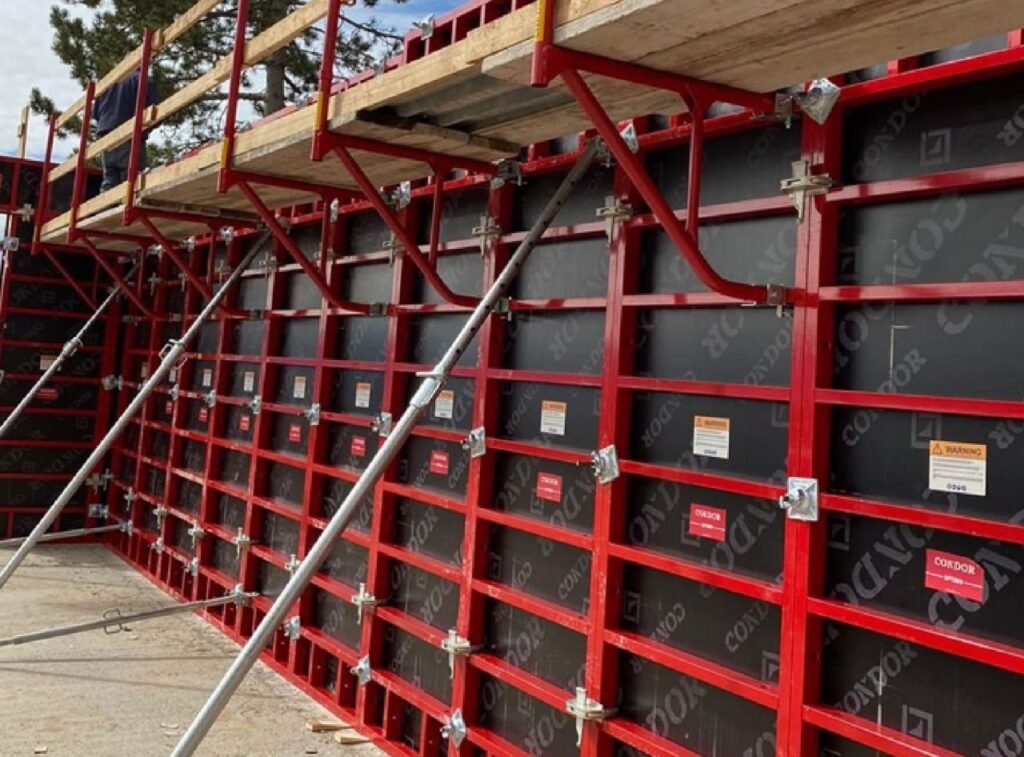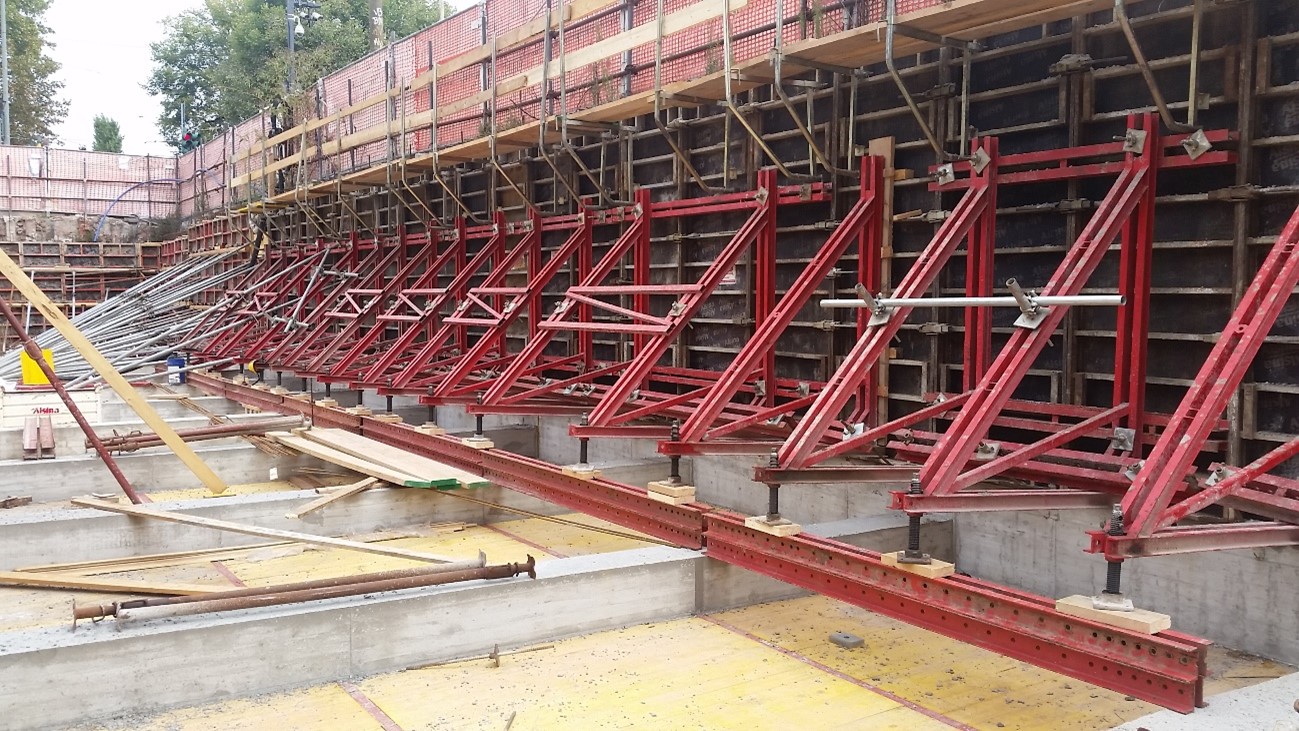When it comes to constructing curved concrete structures, choosing the right plywood formwork is crucial. Plywood formwork serves as a temporary mold for concrete, providing the necessary support and shape during construction. In this article, we will explore the key factors to consider when selecting plywood formwork for curved concrete structures, as well as the importance of maintenance, care, and safety measures.
Understanding Plywood Formwork
Plywood formwork is commonly used in construction projects for its versatility, ease of use, and cost-effectiveness. It consists of multiple layers of thin veneer sheets, known as plies, that are bonded together with an adhesive. The layers are arranged crosswise to enhance strength and prevent warping.
One of the key advantages of plywood formwork is its reusability. Unlike traditional formwork materials like timber, plywood can withstand multiple uses if handled and stored properly. This not only reduces construction costs but also minimizes waste, making it a more sustainable option for building projects.
The Basics of Plywood Formwork
Plywood formwork is typically classified based on its grade, which indicates the quality and performance level of the material. The most commonly used grades for formwork are B-B, B-C, and C-C, with B-B being the highest quality. The grading system considers factors such as surface smoothness, strength, and durability.
Another important aspect to consider when using plywood formwork is the selection of the appropriate thickness. Thicker plywood panels are suitable for heavy-duty applications and can withstand greater concrete pressures, while thinner panels are more flexible and lightweight, making them ideal for curved or intricate designs.

Importance of Plywood Formwork in Concrete Structures
Plywood formwork plays a critical role in ensuring the success of curved concrete structures. It provides the necessary support and shape, allowing for the proper curing and setting of concrete. The quality and durability of the formwork directly impact the final outcome, including the surface finish and overall structural integrity.
Additionally, plywood formwork offers excellent dimensional stability, which is crucial for maintaining the shape and dimensions of concrete elements during the pouring and curing process. This stability helps prevent issues such as bulging or deformation, resulting in a smoother and more uniform finish.
Factors to Consider When Choosing Plywood Formwork
Several factors should be taken into account when selecting plywood formwork for curved concrete structures. These factors include material quality and durability, plywood thickness and size, surface smoothness and flatness, as well as environmental considerations and cost-effectiveness.
When it comes to environmental considerations, opting for plywood sourced from sustainably managed forests can help reduce the impact on the environment. Look for certifications such as FSC (Forest Stewardship Council) to ensure that the plywood has been responsibly harvested.
Cost-effectiveness is another crucial factor to consider when choosing plywood formwork. While high-quality plywood may come at a higher initial cost, it can offer better durability and reusability, ultimately saving money in the long run. Evaluate the overall lifecycle cost of the plywood formwork, including maintenance and replacement expenses, to make an informed decision.
Material Quality and Durability
High-quality plywood formwork is essential to withstand the pressure and forces exerted by wet concrete. Look for formwork made from durable hardwood or hardwood veneer, as these materials offer superior strength and stability. Avoid using lower-grade plywood, which may delaminate or warp under the pressure of the concrete. Read more about stability on https://manoa.hawaii.edu/sealearning/standards-alignment/next-generation-science-standards-ngss/crosscutting-concepts/stability-and-change
Plywood Thickness and Size
The thickness and size of the plywood formwork should be appropriate for the specific curved design. Thicker plywood provides better resistance to bending and deformation but may be heavier and more challenging to handle. Consider the desired curvature and the weight-bearing capacity of the support structure when determining the plywood thickness and size.
Surface Smoothness and Flatness
Smooth and flat plywood surfaces contribute to better concrete finishes. Check the smoothness and flatness of the plywood formwork before use. Rough or uneven surfaces can result in imperfections on the concrete surface. Sanding or caulking may be necessary to ensure a smooth and uniform finish.
Special Considerations for Curved Concrete Structures
Curved concrete structures present unique challenges in formwork selection and installation. It is important to consider the flexibility of plywood formwork and provide adequate support for curved designs.
When working with curved concrete structures, it is crucial to pay attention to the intricacies of the design. The curvature of the structure not only adds aesthetic appeal but also influences the structural integrity of the final product. Architects and engineers must collaborate closely to ensure that the formwork accommodates the curvature without compromising the strength and stability of the concrete.
Flexibility of Plywood Formwork
Curved concrete structures require flexible plywood formwork that can easily adapt to the desired shape. Look for plywood with high flexibility, as this will allow for accurate molding and smooth curves. Consider using bending plywood or specialty curved formwork systems for complex designs.
Moreover, the quality of the plywood used for formwork plays a significant role in the overall finish of the concrete structure. Opting for high-grade plywood not only enhances the flexibility needed for curved designs but also minimizes the risk of warping or bowing during the concrete pouring process. Investing in top-notch materials can ultimately result in a more refined and durable curved concrete structure.
Formwork Support for Curved Designs
Curved concrete structures rely on proper formwork support to maintain the desired shape during pouring and curing. Ensure that the supporting structure is strong, stable, and capable of withstanding the weight of wet concrete. Use additional bracing or tying systems as necessary to prevent movement or deformation of the formwork.
Additionally, the alignment and positioning of the formwork support are critical factors to consider when working on curved structures. Any misalignment or instability in the supporting framework can lead to irregularities in the concrete surface or even structural failures. Taking the time to meticulously set up and secure the formwork support is essential for achieving a flawless curved concrete structure.
Maintenance and Care of Plywood Formwork
Proper maintenance and care of plywood formwork are essential to prolong its lifespan and ensure optimal performance for future projects.
When it comes to plywood formwork, taking proactive steps beyond the basics can significantly enhance its durability and efficiency. Understanding the environmental factors that can impact plywood, such as temperature fluctuations and exposure to sunlight, can help in implementing preventive measures to mitigate potential damage. To find more about temperature click here.
Cleaning and Storage Tips
After each use, clean the plywood formwork thoroughly to remove any concrete residue, dirt, or debris. Avoid using harsh chemicals that may damage the formwork. Consider using environmentally friendly cleaning solutions to maintain the formwork without compromising its structural integrity. Additionally, storing the formwork in a dedicated rack system can prevent unnecessary strain or pressure on the panels, prolonging their usability.
Furthermore, covering the stored formwork with a breathable tarp can offer protection from dust and debris accumulation while still allowing air circulation to prevent moisture buildup. This simple step can make a significant difference in preserving the quality of the plywood for future projects.

Regular Inspection and Repair
Regularly inspect the plywood formwork for any signs of damage, such as cracks, delamination, or weakened areas. In addition to visual inspections, consider conducting periodic moisture tests to ensure the plywood remains within optimal moisture content levels. Addressing any issues promptly can prevent minor damages from escalating into more significant problems that may compromise the formwork’s performance.
Moreover, implementing a rotation schedule for the formwork panels can help distribute wear and tear evenly, extending the overall lifespan of the materials. By keeping detailed records of inspection dates and maintenance activities, construction teams can track the history of each formwork panel and make informed decisions regarding repairs or replacements.
Safety Measures in Using Plywood Formwork
Using plywood formwork for curved concrete structures requires adherence to specific safety measures to protect workers and ensure a successful construction process.
When it comes to utilizing plywood formwork for curved concrete structures, it is crucial to not only focus on the end result but also prioritize the safety and well-being of the workers involved in the construction process. Proper planning and execution of safety measures can significantly impact the outcome of the project, ensuring a smooth and incident-free operation.
Proper Handling and Installation
Ensure that workers receive adequate training in the proper handling, installation, and removal of plywood formwork. Follow manufacturer guidelines and industry best practices to minimize the risk of accidents or injuries. Use appropriate personal protective equipment, such as gloves and safety goggles, when handling formwork materials.
Additionally, conducting regular safety briefings and refresher training sessions can help reinforce the importance of following safety protocols when working with plywood formwork. By instilling a culture of safety awareness among workers, construction teams can create a secure environment that promotes efficiency and productivity.
Ensuring Stability and Strength
Prioritize the stability and strength of the formwork structure during construction. Avoid overloading the formwork or subjecting it to excessive forces. Implement additional bracing or support systems as needed to prevent formwork failure or collapse. Regularly monitor the formwork during the concrete pouring process to detect any signs of instability or movement.
Furthermore, conducting thorough inspections of the formwork before each use can help identify any potential issues or weaknesses that may compromise its stability. By addressing these concerns proactively, construction teams can mitigate risks and ensure the structural integrity of the formwork throughout the project.
By considering these tips for choosing the right plywood formwork for curved concrete structures, construction professionals can ensure successful and efficient project outcomes. Prioritizing material quality, proper maintenance, and safety measures will contribute to the longevity and reliability of plywood formwork, enabling the realization of impressive curved concrete structures.
Read more about at: Why Formwork Plywood is Essential for Efficient Concrete Pouring

